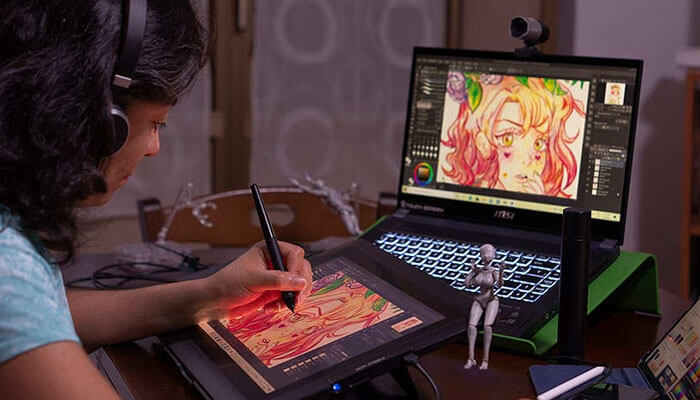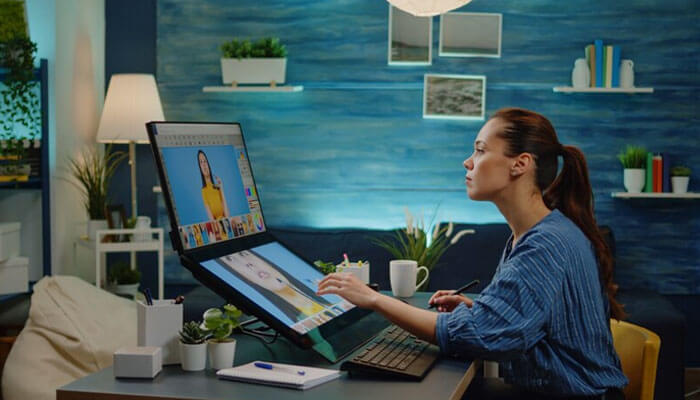Art and technology have a unique intersection that has been explored in various fields, ranging from film and music to video games and gambling. With the rise of digital technology, art has found a new medium to explore and experiment with. The world of digital creativity has opened up endless possibilities for artists and creatives, allowing them to push the boundaries of what was previously thought possible.
One field where this intersection has had a significant impact is gambling. Gambling has evolved from simple card games to a billion-dollar industry with the rise of online casinos and mobile apps. The gambling industry has been quick to embrace technology, and as a result, we have seen an explosion in the number of games and betting options available. The use of advanced algorithms and artificial intelligence has made it possible to create more complex and engaging games that can adapt to the player’s skill level and preferences.
At the same time, the gambling industry has also turned to art to enhance the player experience. From intricate game designs to stunning graphics and animations, digital art has become an essential part of modern gambling. The use of art and technology has helped create immersive and visually stunning games that draw players in and keep them engaged.
However, the intersection of art and technology goes beyond just gambling. It has implications for the broader creative industry, including art, music, film, and fashion. Technology has made it possible to create entirely new forms of art, such as digital installations and virtual reality experiences. It has also revolutionized how art is produced and consumed, with the rise of online platforms and social media allowing artists to reach a global audience.
The Emergence of Digital Art
The emergence of digital art has had a profound impact on the world of art, including the gambling industry. Digital art is a form of art that is created using digital technology, including computers, software, and electronic devices. It has transformed the way art is created and consumed, leading to new forms of expression and creative possibilities.
In the gambling industry, digital art has played a significant role in shaping the games we play today. With the rise of online casinos and mobile apps, game developers have had to come up with new and innovative ways to attract and retain players. Digital art has been used to create visually stunning games that are immersive and engaging, enhancing the player experience.
One way digital art has changed the gambling scene is through the use of advanced graphics and animations. Game developers use cutting-edge software to create intricate designs and animations that bring the games to life. The use of high-quality graphics has become essential in attracting players, as they create a more immersive and realistic gaming experience.
Digital art has also allowed game developers to create more complex and challenging games that can adapt to the player’s skill level. For example, artificial intelligence can be used to create games that adjust the difficulty level based on the player’s performance. This makes the games more engaging and challenging, keeping the player coming back for more.
Furthermore, digital art has enabled game developers to create entirely new games that were not possible before. For instance, virtual reality technology has opened up new possibilities for gaming by creating immersive and interactive environments that players can explore. This has led to the development of new types of games that were previously unimaginable.
The Role of Technology in Digital Art
The role of technology in digital art is significant, as it has enabled artists to create new forms of art and explore new creative possibilities. Technology has also transformed the way we create and consume art, including in the world of online gambling and casinos.
One area where technology has revolutionized online casinos is in the creation of slot games. Slot games are among the most popular games in online casinos, and they are a prime example of the intersection between art and technology. Slot games incorporate sophisticated graphics and animations, sound effects, and themes to create an immersive and engaging player experience.
Technology plays a vital role in the creation of slot games. Game developers use specialized software to create the games, including the reels, symbols, and bonus features. The use of advanced algorithms and artificial intelligence also allows game developers to create more complex and challenging games, such as progressive jackpot slots.
The development of online casinos has also been significantly impacted by technology. Online casinos have become more accessible to players, thanks to advancements in technology, including mobile devices and high-speed internet connections. Online casinos offer a vast selection of slot games and other casino games that can be played from the comfort of your own home or on the go.
Moreover, technology has enabled the creation of sites to play slots on, which are user-friendly, secure, and offer a wide range of games to choose from. These sites use advanced encryption technology to ensure the safety and security of players’ personal and financial information.
The Future of Digital Art
The future of digital art is an exciting and ever-evolving landscape that holds endless possibilities for artists and creatives. As technology continues to advance, so too will the possibilities for digital art.
One area of growth is in the use of artificial intelligence and machine learning, which can create more advanced and sophisticated forms of digital art. Virtual reality and augmented reality technologies are also expected to become more widespread, offering new opportunities for immersive and interactive digital experiences.
Moreover, as digital art becomes more mainstream, we can expect to see it being used in new and unexpected ways. For example, digital art installations may become more prevalent in public spaces, offering unique and interactive experiences for viewers. Additionally, digital art may continue to break down barriers between different art forms, such as film, music, and visual art.
Overall, the future of digital art holds much promise, and it will undoubtedly continue to transform the art world in ways we cannot yet imagine.
The Intersection of Digital Art and Society
The intersection of digital art and society is a complex and multifaceted topic that touches on various aspects of our lives. Digital art has the potential to play an essential role in shaping our understanding of society and the world around us.
Digital art can be used to raise awareness of social issues, promote social justice, and create more inclusive spaces. For example, digital art installations can be used to create immersive and interactive experiences that engage viewers in critical issues such as climate change, inequality, and social justice. Digital art can also be used to create more diverse and inclusive representations of society, challenging traditional stereotypes and biases.
Moreover, digital art can create new opportunities for collaboration and community building, bringing together artists, activists, and communities to create social change. The democratization of digital tools has also made it easier for people from all walks of life to create and share digital art, fostering a more diverse and inclusive digital culture.
However, the intersection of digital art and society also raises important questions about the role of technology in our lives. For example, concerns about privacy, data security, and the impact of social media on mental health have become increasingly prevalent in recent years. As digital art becomes more ubiquitous, we must also consider its impact on our relationship with technology and its role in shaping our social, cultural, and political systems.
Conclusion
In conclusion, the intersection of art and technology has given rise to a new era of digital creativity, offering endless possibilities for artists and creatives. From the emergence of digital art to the role of technology in online gambling and casinos, the intersection of art and technology has transformed our understanding of what art is and how it can be created and consumed.
As we look to the future, the potential for digital art to shape our understanding of society and the world around us is vast. Digital art has the power to promote social justice, raise awareness of critical issues, and create more inclusive spaces. However, we must also be mindful of the potential risks and challenges associated with the increasing use of technology in our lives.
The intersection of digital art and society raises important questions about the impact of technology on our relationships, our communities, and our culture. As we continue to explore the potential of digital art, we must also consider its role in shaping our social, cultural, and political systems.
Ultimately, the intersection of art and technology offers a unique opportunity to create and innovate in ways that were once unimaginable. As we navigate the ever-evolving landscape of digital creativity, we must continue to embrace the potential of art and technology to transform our understanding of the world around us.




